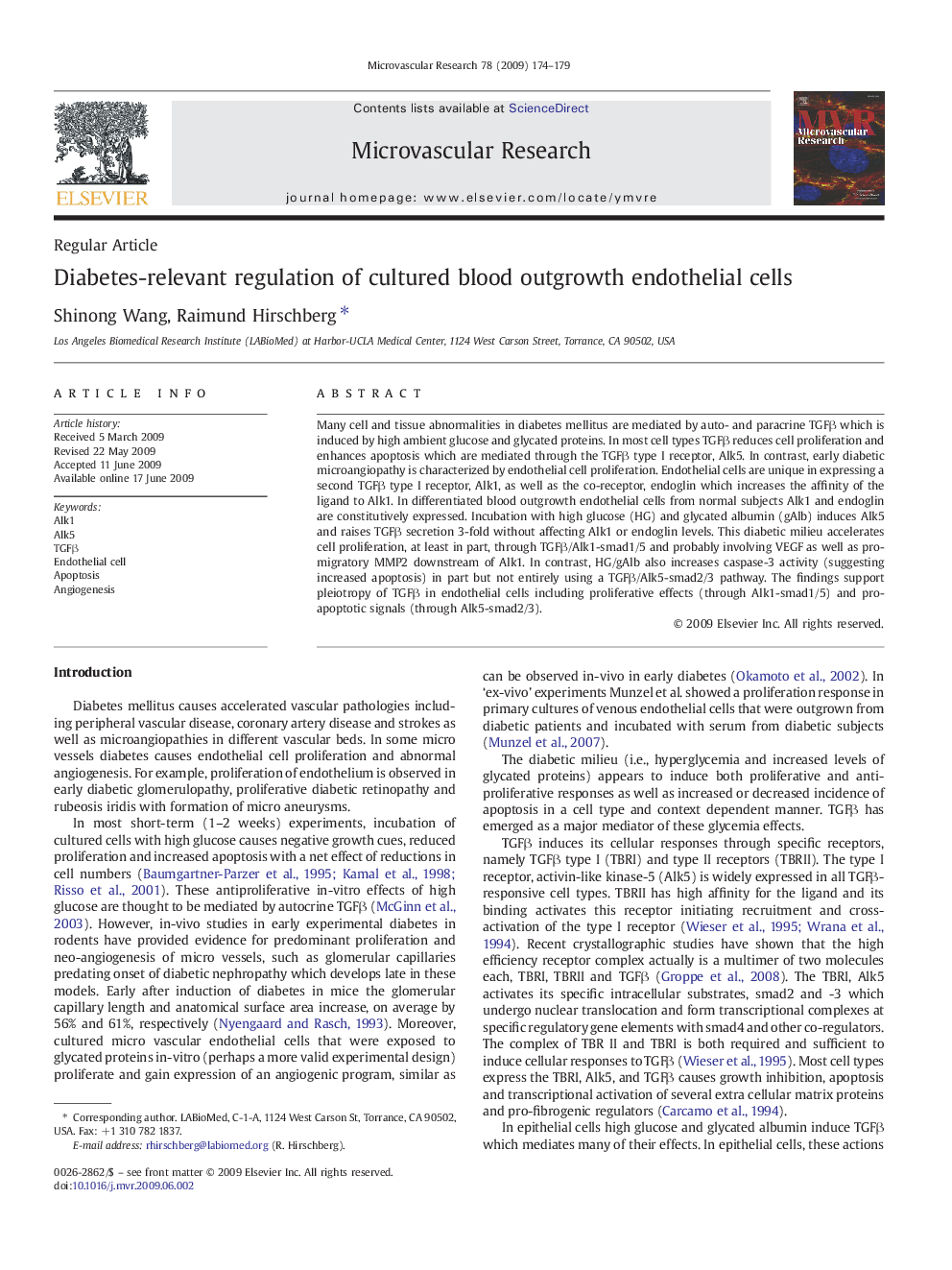| Article ID | Journal | Published Year | Pages | File Type |
|---|---|---|---|---|
| 1995154 | Microvascular Research | 2009 | 6 Pages |
Many cell and tissue abnormalities in diabetes mellitus are mediated by auto- and paracrine TGFβ which is induced by high ambient glucose and glycated proteins. In most cell types TGFβ reduces cell proliferation and enhances apoptosis which are mediated through the TGFβ type I receptor, Alk5. In contrast, early diabetic microangiopathy is characterized by endothelial cell proliferation. Endothelial cells are unique in expressing a second TGFβ type I receptor, Alk1, as well as the co-receptor, endoglin which increases the affinity of the ligand to Alk1. In differentiated blood outgrowth endothelial cells from normal subjects Alk1 and endoglin are constitutively expressed. Incubation with high glucose (HG) and glycated albumin (gAlb) induces Alk5 and raises TGFβ secretion 3-fold without affecting Alk1 or endoglin levels. This diabetic milieu accelerates cell proliferation, at least in part, through TGFβ/Alk1-smad1/5 and probably involving VEGF as well as pro-migratory MMP2 downstream of Alk1. In contrast, HG/gAlb also increases caspase-3 activity (suggesting increased apoptosis) in part but not entirely using a TGFβ/Alk5-smad2/3 pathway. The findings support pleiotropy of TGFβ in endothelial cells including proliferative effects (through Alk1-smad1/5) and pro-apoptotic signals (through Alk5-smad2/3).
